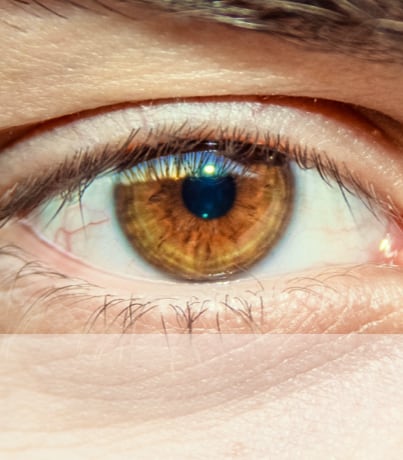You may have received your first eyeglasses prescription when you were a kid or as recently as a few years ago. Your optometrist will have tested your eyes to fully understand your vision needs and how they can help you manage them.
If it’s been a few years since your last visit, you may be wearing old glasses that aren’t helping your eyesight anymore. They may be causing unnecessary eye strain or pain, which can become difficult to manage over a long period of time.
How Prescription Eyeglasses Help Your Eyesight
Your eyes process light as visual information to help you understand your surroundings. The basic anatomy of your eye includes your:
- Cornea: the clear surface of your eye shaped like a dome
- Iris: the colored part of your eye that controls how much light enters the pupil
- Pupil: the black opening in the middle of your iris that light passes through
- Lens: the transparent inner part of your eye that focuses light on the retina
- Retina: the inner surface of the back of your eye that interprets light to optic nerves
Light enters your eye through the cornea and pupil. That light refracts through the lens and focuses on your retina. All of these critical parts of your eye are curved, so light needs to pass through and refract at correct angles for you to see correctly.
A large part of proper sight is where the light lands in relation to your retina.
- People with myopia, or nearsightedness, have trouble seeing objects at a distance. If the light bends and focuses in front of your retina, it causes myopia. A prescription for myopia is negative—the higher the number, the stronger the prescription.
- Hyperopia, or farsightedness, causes blurriness and lack of focus for objects closer to the eye. If the light bends and focuses behind your retina, it causes hyperopia. Opposite from myopia, a prescription for hyperopia is a positive number.
Prescriptions for nearsightedness and farsightedness help you see clearly no matter the distance. Prescriptions for eyeglasses and contact lenses will vary because they function differently, but the overall concept is the same.
Damaging Effects of an Incorrect Prescription
As we age, our eyes change shape, grow, and can become weaker. You could experience worsening myopia symptoms or more trouble seeing up close. That means your prescription may change over time.
Glasses help correct your vision. If your prescription changes, your glasses will no longer correct your vision and can cause more vision and health problems.
Eye Strain
If you aren’t using the right prescription, your eyes will work harder to see through the incorrect lens. Overworking your eyes in this manner can lead to more damage. Eye strain can cause severe headaches, which are challenging to manage if you don’t get your prescription corrected.
Vertigo
Vertigo is the feeling of the environment around you spinning or pulsating. If vertigo becomes too severe, it can cause dizziness, nausea, and vomiting. Wearing an incorrect prescription for a long time can change your depth perception and cause vertigo.
Blurred Vision
If you wear the same prescription without checking if it’s correct, you may not realize your vision is blurred. As your eyes adjust to correct what they see through your old glasses, they can overcorrect and make your prescription harder to manage.

Getting the Right Prescription
It’s important to get the right prescription and make sure you keep your current one updated. Wearing old prescription glasses can damage your eyesight and make your vision more challenging to manage and correct over time.
Some signs you might need to see an optometrist about a new prescription include:
- Blurred vision
- Increased headaches
- Difficulty focusing
- Frequent squinting
- Eye fatigue
- Seeing double
When you visit your optometrist, they will go over a series of tests to determine if you need a prescription. A comprehensive eye exam also allows your optometrist to diagnose other vision problems like dry eye and ocular disease.Getting the right prescription also means choosing the perfect frames to express your personality, whether designer fashion or practical frames for everyday life. Drop by or give us a call to book with a Colorado Springs optometrist at our location, who will be able to help you find frames that suit your face and eye shape.







